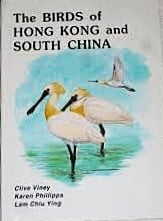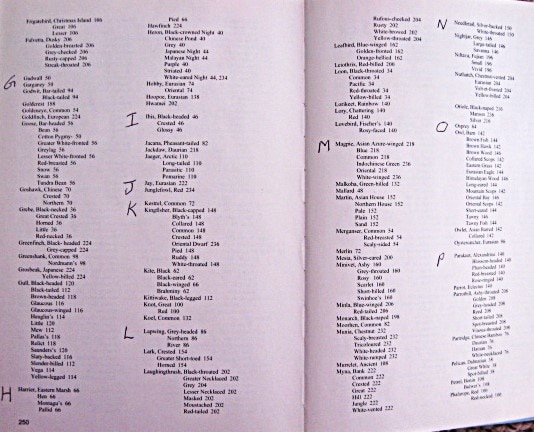Birds of Hong Kong and South China

Birds of Hong Kong and Southern China
by Viney, Phillipps and Ying, 8th edition, 2005
No publisher is named, so I guess this is self-published by the authors.
The book is the standard size with the standard layout of pictures on the right and text on the left..
Quality of Images
The images are from paintings by Karen Phillipps and are of very high quality. The colours are accurate, and the birds are in great detail. There are six to eight species per page, and three of each species in breeding, non-breeding, and juvenile plumage. Although there are a lot of images per page, they are still large enough to show the detail.
Maps
There are no species maps; only two large maps are inside the front and back covers. Hong Kong is relatively small, and it is easy to get around with public transport. This website has detailed information on birding hotspots in Hong Kong. Click here.
Text and Taxonomic Order
The font is a bit smaller than in other publications. If you have poor eyesight, you might want to use a magnifying glass.
The taxonomic order is based on “The Avifauna of Hong Kong”, published by the Hong Kong Birdwatching Society in 2001..
The species names are in English, Scientific Chinese, and Chinese. Otherwise, the book is all in English.
Similar Species
No information if given on species that are very similar to the one you are interested in. This is not unusual. The majority of guidebooks do not provide this information, but some do, and it is very handy.
The Index

There is one index in English and one with scientific names.
The index is in order of family names, with species names indented. I like this type of index as it makes it very easy to find the spaces you are looking for. Some books have English, scientific, and species names all mixed together. A bold letter would be nice to separate the letters of the alphabet. For books that do not have this feature, I usually write it in myself.
Extra Features

A nice extra feature of this book is the blue circles that indicate the scarcity of the species.
The filled-in blue circle means that the species is widespread and common.
The blue circle, not filled in, indicates a less common species that is recorded annually and should be easy to find if you look in the right habitat at the correct time of year.
A thin blue circle indicates a rare species that occurs annually in very small numbers and only in a few places. You could do some Google research to locate these species.
If no circle is given, that species does not regularly occur in Hong Kong or Southern China.
I really like this feature. I have never seen it before. Some books indicate scarcity as part of the text, but this method is so much easier to use. You can quickly eliminate any species that does not have a circle, as it is unlikely that you will find them.
Print Quality
The book is printed on thick, high-quality, glossy paper. It should withstand a lot of use in the field without sustaining much damage.
Summary
This is an excellent book. I used it in Hong Kong and recommend it. I have not reviewed other books on Hong Kong birds. If you have a good one and feel like writing a review of it, I will publish it here with your credit (see my guidelines for choosing a good bird guide book).
What do you think? (M) Write a review
You must be logged in to submit a review. Go to Members page to Log-in or Register